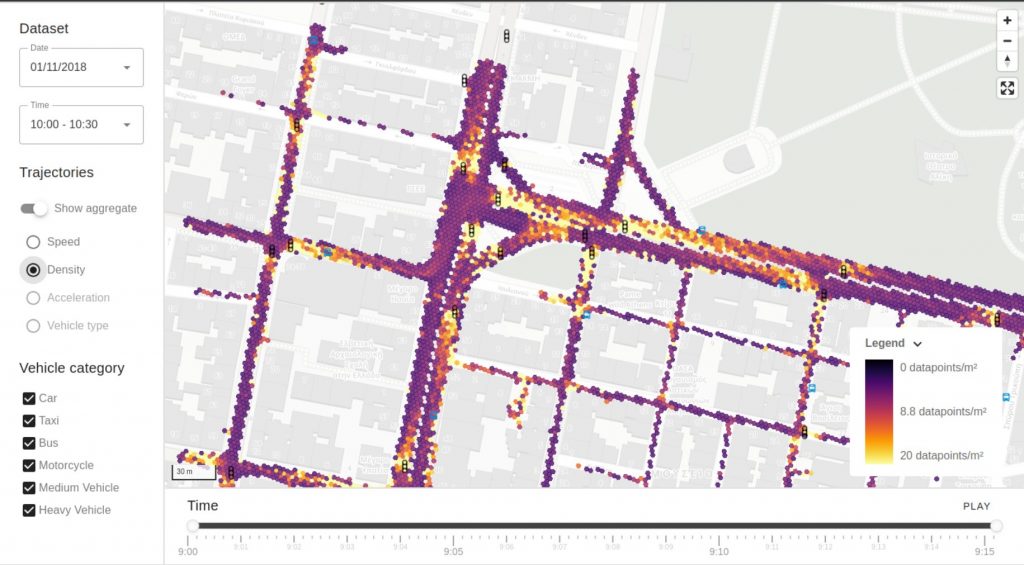
Introduction to pNEUMA
The pNEUMA Visualization Project, an initiative from EPFL’s Laboratory of Urban Transport Systems (LUTS), leverages advanced drone technology to capture and analyze urban traffic patterns in Athens. This project stands out for its focus on transforming extensive traffic data into accessible and actionable insights through a refined data processing pipeline.
Objective and Scope of pNEUMA
The primary goal of the pNEUMA project is to deliver a user-friendly platform for visualizing traffic data. This platform aids urban planners, researchers, and policymakers in making informed decisions to improve city living conditions. At the core of this initiative is the innovative use of data processing techniques that optimize the accessibility and usability of complex datasets.
Advanced Data Processing: Core to Our Project
The data processing pipeline is central to our contributions in the pNEUMA project. Here’s a detailed look at how this pipeline enhances the research team’s work:
- Efficient Data Management: Utilizing Python and MovingPandas for the initial processing of trajectory data ensures that the vast amounts of data captured by drones are accurately and efficiently handled.
- Hexagonal Data Aggregation: By employing Uber’s H3 system, we aggregate the data into hexagonal bins, significantly reducing complexity while maintaining geographic integrity.
- Optimized Geospatial Analysis: Our use of PostGIS functions integrated within the Martin tile server enables us to perform spatial analyses and generate vector tiles efficiently.
- Effective Data Transformation and Distribution: We convert these vector tiles into PMTiles. Originally, datasets are over 2+ GB each, but after processing, they are compressed into tiles ranging from 100 kB to 1.5 MB. This drastic reduction in file size means that users can load and interact with the data almost instantly when accessing the platform online.

Figure 1: Illustrating the efficient data processing workflow in the pNEUMA project.
Impact of the Data Processing Pipeline
The implementation of this sophisticated data processing pipeline provides numerous benefits:
- Rapid Data Access: The transformation of large datasets into small, manageable tiles allows for swift data retrieval and interaction, facilitating a seamless user experience.
- Enhanced Research Capability: Researchers can now access and analyze detailed traffic data more efficiently, speeding up the research process and enabling deeper insights into traffic patterns.
- Support for Urban Development: Insights gained from the platform assist urban planners in devising better traffic management strategies and infrastructure improvements, promoting sustainable urban development.
Future Directions
We are looking to expand the capabilities of the pNEUMA platform by incorporating real-time data processing and extending our dataset coverage to other cities. These enhancements aim to broaden the platform’s impact and utility, making it an essential tool for global urban mobility analysis.
Conclusion
Through the pNEUMA project, we demonstrate the practical application of sophisticated data processing techniques in urban traffic analysis. Our efforts in refining the data pipeline have significantly improved the platform’s functionality, enabling instant access to complex traffic data and supporting ongoing advancements in urban mobility research.
For more details and continuous updates, visit our project site at pNEUMA Platform.